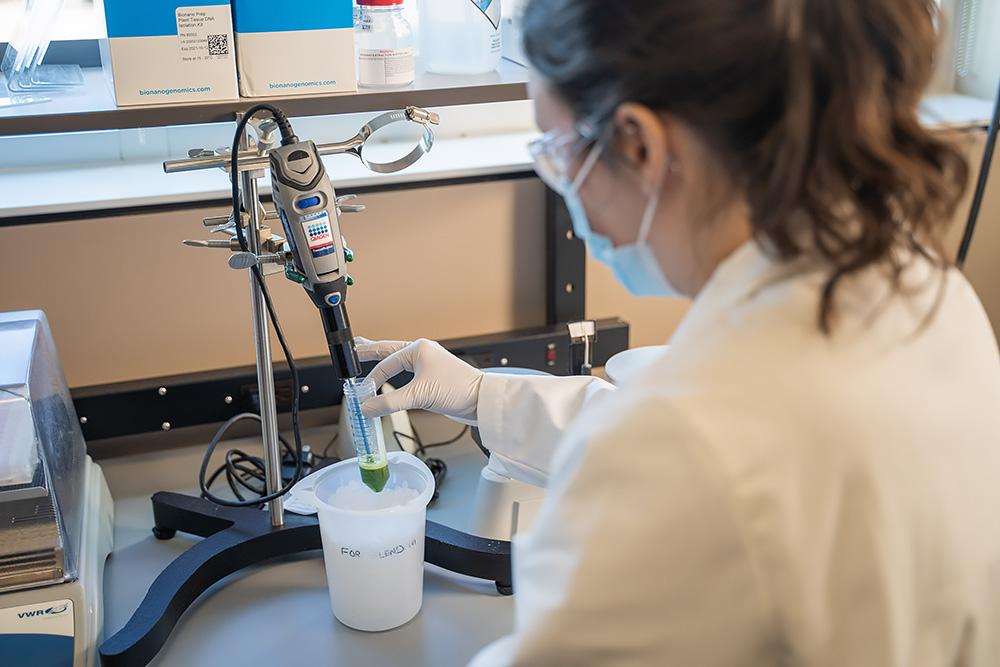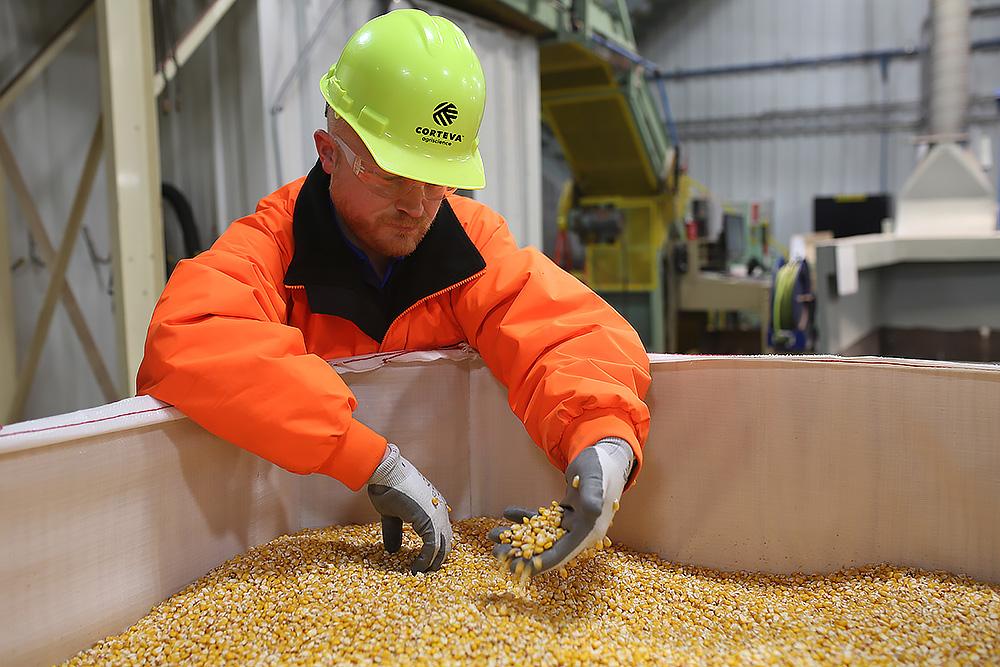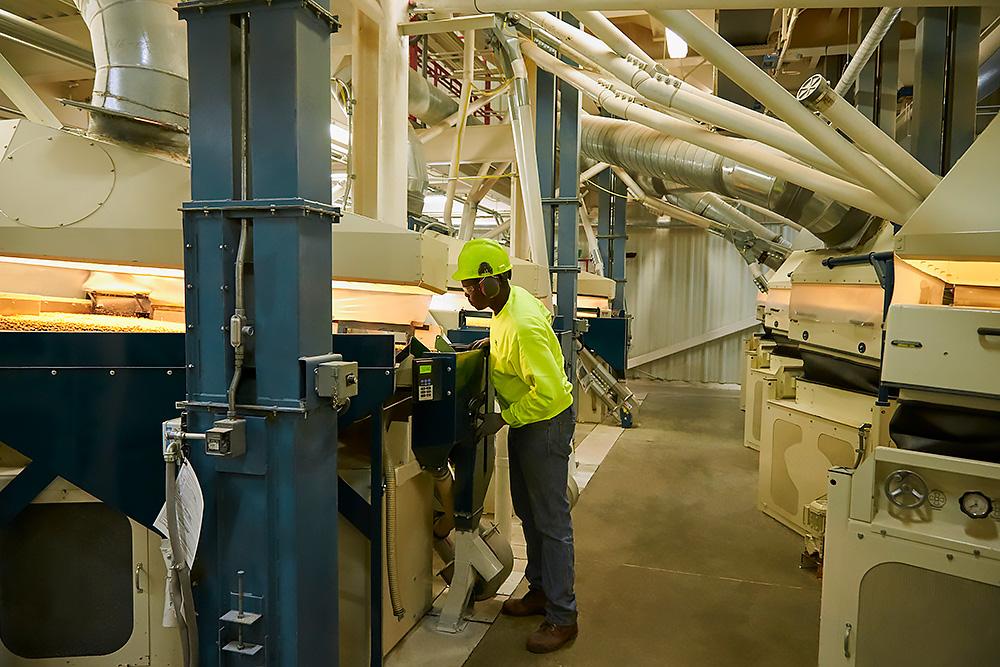Seed quality has never been more important than it is today. It’s critical to plant professionally produced seed from a trusted authorized supplier.
Investing in professionally produced seed greatly contributes to long-term success. This choice holds significant advantages for today’s and tomorrow’s agriculture producers.
Many times a portion of professionally produced seed purchased goes to fuel the research and development of new products, setting the stage for the emergence of the next wave of seeds and securing improvements in yield for years to come. These investments drive progress in genetic technology and empower growers to stay ahead of Mother Nature. The outcome is consistent performance fortified by heightened resistance to diseases and pests.
Notably, these research and development investments address present challenges like corn rootworm, tar spot, cyst-nematodes, weed resistance, and drought, while simultaneously gearing up to confront upcoming obstacles. The U.S. seed industry reinvests approximately 15% of the estimated total annual seed value1 of $26.0 billion into R&D2. According to the Seed Innovation and Protection Alliance (SIPA), approximately $3.9 billion is invested in annual research and development to bring innovations to market.
The U.S. seed industry reinvests approximately $3.9 billion annually in research and development to bring innovations to market.
How Have Seed Technologies Advanced?
Seed technology focuses on seed research, development, production, and application for crop production. This technology has transformed the way seeds are produced, tested, and utilized in modern agriculture.
- Genomics: Understanding the structure and function of genes
- Breeding: Process is being accelerated and refined to unprecedented levels
- Handling: Entire seed manufacturing process is being streamlined
- Processing: Seed coating techniques and mechanical and optical sorting have transformed the production process
- Quality: New seed traits enhance quality and can lead to higher yields
- Storage: Controlled-environment facilities utilize state-of-the-art technology
- Testing: New techniques measure the way seeds are evaluated for quality, viability, and performance
- Utilization: Planting equipment now helps ensure that seeds are planted at optimal depths, spacing, and patterns for higher seedling survival rates

Invest Now to Fund Future Seed Innovations
When growers invest in professionally produced seeds for crop production, they’re directly contributing to research and development of the next generation of seeds.
Ongoing research is the key to increase yields to meet the demands of a growing population. Advanced breeding programs focus on developing high-yielding varieties that help growers produce more food on the same amount of land. For instance, hybrid corn varieties today have superior genetic traits, leading to increased kernel production per plant and higher corn yields per acre. According to SIPA, improved genetic potential now contributes 70% to realized yield — up from 50%.
Another reason is research on seed traits is crucial, especially due to climate change. Seed companies work on creating varieties that can withstand extreme weather conditions like drought, heat, strong winds, flooding and diseases. These traits ensure stable and sustainable crop production and are more accessible in professionally produced seeds.
According to USDA data3, the estimated corn yield in the United States in 2022 was 173 bushels per acre. That’s compared to an estimated 91 bushels per acre in 1980. Average soybean yields have also increased since 1980, when they were estimated at 27 bushels per acre compared to 49 bushels per acre in 2022.
Joe McClure, Iowa Soybean Association director of research, points out that historical yield increases have been possible through the adoption of new varieties in order to benefit from breeding advancements occurring each year. “The potential of soybeans to yield more is impressive and made possible through advancements of research and management on the farm,” McClure says.
SIPA says it takes $1 million and 7 to 18 years to develop a new variety.
The mean duration to bring a genetic trait to the point of commercialization in 2017–2022 was 16.5 years. However, this study did not assess the time required to develop stacked trait varieties, which commonly represent commercial seed product offerings.4
Improved genetic potential now contributes 70% to realized yield — up from 50%. — Seed Innovation and Protection Alliance

Empowering Growers Through Upgraded Infrastructure
An additional benefit of purchasing professionally produced seed is the contribution to investments in seed company infrastructure and the improvement of seed processing and storage facilities.
Upgraded, modern seed company facilities streamline processing operations, leading to increased efficiency. Advanced machinery and automation help reduce processing time, minimize manual labor, and optimize resource utilization, allowing seed companies to handle larger volumes of seed effectively.
State-of-the-art facilities, equipment and processes enable better quality control throughout the seed production and processing stages. Maintaining strict quality standards ensures that growers receive high-quality seed with consistent performance, germination rates, and genetic purity like with crop certification.
Maintaining strict quality standards ensures that growers receive high-quality seed with consistent performance, germination rates, and genetic purity like with crop certification.
Upgraded storage facilities provide optimal conditions for seed storage, which preserves seed viability and longevity. Proper temperature, humidity, and ventilation prevent seed deterioration and maintain seed vigor, reducing the risk of decreased germination rates over time.
Improved seed processing and storage facilities can handle a broader range of crop varieties efficiently. This promotes diversity in the available seed selection, allowing growers access to a wider array of crops suitable for various climates, growing conditions, and market demands.

Sustainability is essential in our society to preserve resources, like water, to meet present needs without compromising future generations. By adopting energy-efficient technologies, seed production facilities can minimize their carbon footprint and improve resource use. They also incorporate waste reduction strategies, including efficient packaging and recycling initiatives, to enhance their eco-friendly practices.
When growers demand improved crop varieties, it encourages investments in research and development. This demand acts as a driving force for seed companies to continue to focus their efforts on developing new and improved crop varieties that meet growers’ needs and preferences. This, in turn, leads to the creation of additional farmer choices for more advanced and genetically superior seed products than in the past, and ultimately the continuous improvement and innovation in agriculture.
Learn more about long-term seed innovation benefits.
1 Analysis on sales and profitability within the seed sector: Independent report by IHS Markit (Phillips McDougall) for the co-chairs of the ad-hoc open-ended working group to enhance the functioning of the multilateral system of Fao’s International Treaty on plant genetic resources for food and agriculture. IHS Markit Agribusiness Consulting, 4 Nov., 2019.
2 Production Expenses- Farm and Wealth Statistics. USDA – ERS. 2023. https://data.ers.usda.gov/reports.aspx?ID=17834
3 Crop Production Report. USDA-NASS, 8/11/2023. Crop Production 08/11/2023
4 Crop Life International (2022). Time and Cost to Develop a New GM Trait. Executive Summary. Page 5



